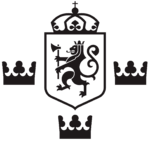Chancellor of Acrea: Difference between revisions
No edit summary |
No edit summary |
||
| (28 intermediate revisions by the same user not shown) | |||
| Line 2: | Line 2: | ||
| post = Chancellor | | post = Chancellor | ||
| body = the [[Acrea|Kingdom of Acrea]] | | body = the [[Acrea|Kingdom of Acrea]] | ||
| flag = | | flag = AcreaCoatofArmsV10.png | ||
| flagsize = | | flagsize = 150px | ||
| flagborder = | | flagborder = | ||
| flagcaption = Coat of Arms of His Majesty's Government | | flagcaption = Coat of Arms of His Majesty's Government | ||
| Line 9: | Line 9: | ||
| insigniasize = | | insigniasize = | ||
| insigniacaption = | | insigniacaption = | ||
| image = | | image = Valen2020.jpg | ||
| imagesize = | | imagesize = 300px | ||
| alt = | | alt = | ||
| incumbent = | | incumbent = [[Emma Valen]] | ||
| honorific_suffix = ROAS | | honorific_suffix = ROAS | ||
| incumbentsince = | | incumbentsince = 11 June 2020 | ||
| type = | | type = | ||
| status = Head of Government | | status = Head of Government | ||
| Line 21: | Line 21: | ||
| member_of = | | member_of = | ||
| reports_to = Parliament | | reports_to = Parliament | ||
| residence = | | residence = Kansliet (official residence and office)<br>Strömsholm (country residence) | ||
| seat = | | seat = | ||
| nominator = | | nominator = | ||
| appointer = [[Monarchy of Acrea| | | appointer = [[Monarchy of Acrea|Leo II]] | ||
| appointer_qualified = | | appointer_qualified = | ||
| termlength = {{wp|At His Majesty's pleasure}} | | termlength = {{wp|At His Majesty's pleasure}} | ||
| termlength_qualified = | | termlength_qualified = | ||
| constituting_instrument = | | constituting_instrument = | ||
| precursor = | | precursor = | ||
| formation = | | formation = | ||
| Line 42: | Line 42: | ||
}} | }} | ||
The '''Chancellor of Acrea''' | The '''Chancellor of Acrea''' is the {{wp|head of government}} of the [[Acrea|Kingdom of Acrea]]. | ||
The position originates from the late middle ages, when the office of '' | The position originates from the late middle ages, when the office of ''Kansler'' was created in the newly re-unified Acrean state as the chief minister overseeing both the noble legislature and the citizen's legislature- the early predecessors of the modern ''Riksdag''. As the role of the monarchy in the government evolved, the office of Chancellor gradually became the effective leader of the Acrean state with only the Crown ranking higher. The Monarch has the ability to dismiss the whole or part of parliament, and the ability to dismiss the Chancellor, however this power has never been practiced since parliamentary reforms in 1809. | ||
The Chancellor and the government are, in practice, appointed by the Monarch, although today the appointment of the government is deferred to the | The Chancellor and the government are, in practice, appointed by the Monarch, although today the appointment of the government is deferred to the Stortinget. The majority party then selects nominations for the position of Chancellor, who is typically but not always the leader of the party. There is no law restricting the social status of the Chancellor. | ||
==Historical Overview== | |||
The title and position of Chancellor has a long history dating back to the formation of the ''Riksdag'' in 1215. In the early days of the Kingdom, the Chancellor was the highest ranking dignitary and chief diplomat and was known as the ''Rigskansler''. There were fairly strict special requirements to be met in order to hold the position; the individual needed to be a member of the nobility, and had to be of mixed Dane and Gothic blood. These were combined with much more typical standards that required the individual to be at least 40 years old, be of natural Acrean birth, and to have held prior political office. A diet held in Trier in 1601 vaguely loosened these restrictions, removing the necessity for the individual to be a member of the nobility. In 1796, the requirements were reduced further, necessitating only that the individual be of at least 30 years of age and of natural Acrean birth. These requirements persist into the present day. | |||
The importance of the role of Chancellor has varied since its establishment. The Chancellor variously serves as an executive and to oversee Parliament, and granted wide executive powers acting in the name of the Monarch, including the ability to dissolve parliament. In addition, the Chancellor was established upon appointment by the Monarch, with parliamentary elections and appointments having little official impact on the appointment of the Chancellor. This was changed in 1464 under the urging of Chancellor [[Johannes Riiser]], with legislative reforms requiring that candidates for Chancellor be nominated by parliament and then subsequently appointed by the Monarch. | |||
[[Category:Acrea]] | |||
Latest revision as of 07:12, 21 October 2023
| Chancellor of the Kingdom of Acrea | |
|---|---|
 Coat of Arms of His Majesty's Government | |
| Style | Chancellor (informal) Her Excellency (diplomatic) |
| Status | Head of Government |
| Reports to | Parliament |
| Residence | Kansliet (official residence and office) Strömsholm (country residence) |
| Appointer | Leo II |
| Term length | At His Majesty's pleasure |
The Chancellor of Acrea is the head of government of the Kingdom of Acrea.
The position originates from the late middle ages, when the office of Kansler was created in the newly re-unified Acrean state as the chief minister overseeing both the noble legislature and the citizen's legislature- the early predecessors of the modern Riksdag. As the role of the monarchy in the government evolved, the office of Chancellor gradually became the effective leader of the Acrean state with only the Crown ranking higher. The Monarch has the ability to dismiss the whole or part of parliament, and the ability to dismiss the Chancellor, however this power has never been practiced since parliamentary reforms in 1809.
The Chancellor and the government are, in practice, appointed by the Monarch, although today the appointment of the government is deferred to the Stortinget. The majority party then selects nominations for the position of Chancellor, who is typically but not always the leader of the party. There is no law restricting the social status of the Chancellor.
Historical Overview
The title and position of Chancellor has a long history dating back to the formation of the Riksdag in 1215. In the early days of the Kingdom, the Chancellor was the highest ranking dignitary and chief diplomat and was known as the Rigskansler. There were fairly strict special requirements to be met in order to hold the position; the individual needed to be a member of the nobility, and had to be of mixed Dane and Gothic blood. These were combined with much more typical standards that required the individual to be at least 40 years old, be of natural Acrean birth, and to have held prior political office. A diet held in Trier in 1601 vaguely loosened these restrictions, removing the necessity for the individual to be a member of the nobility. In 1796, the requirements were reduced further, necessitating only that the individual be of at least 30 years of age and of natural Acrean birth. These requirements persist into the present day.
The importance of the role of Chancellor has varied since its establishment. The Chancellor variously serves as an executive and to oversee Parliament, and granted wide executive powers acting in the name of the Monarch, including the ability to dissolve parliament. In addition, the Chancellor was established upon appointment by the Monarch, with parliamentary elections and appointments having little official impact on the appointment of the Chancellor. This was changed in 1464 under the urging of Chancellor Johannes Riiser, with legislative reforms requiring that candidates for Chancellor be nominated by parliament and then subsequently appointed by the Monarch.
